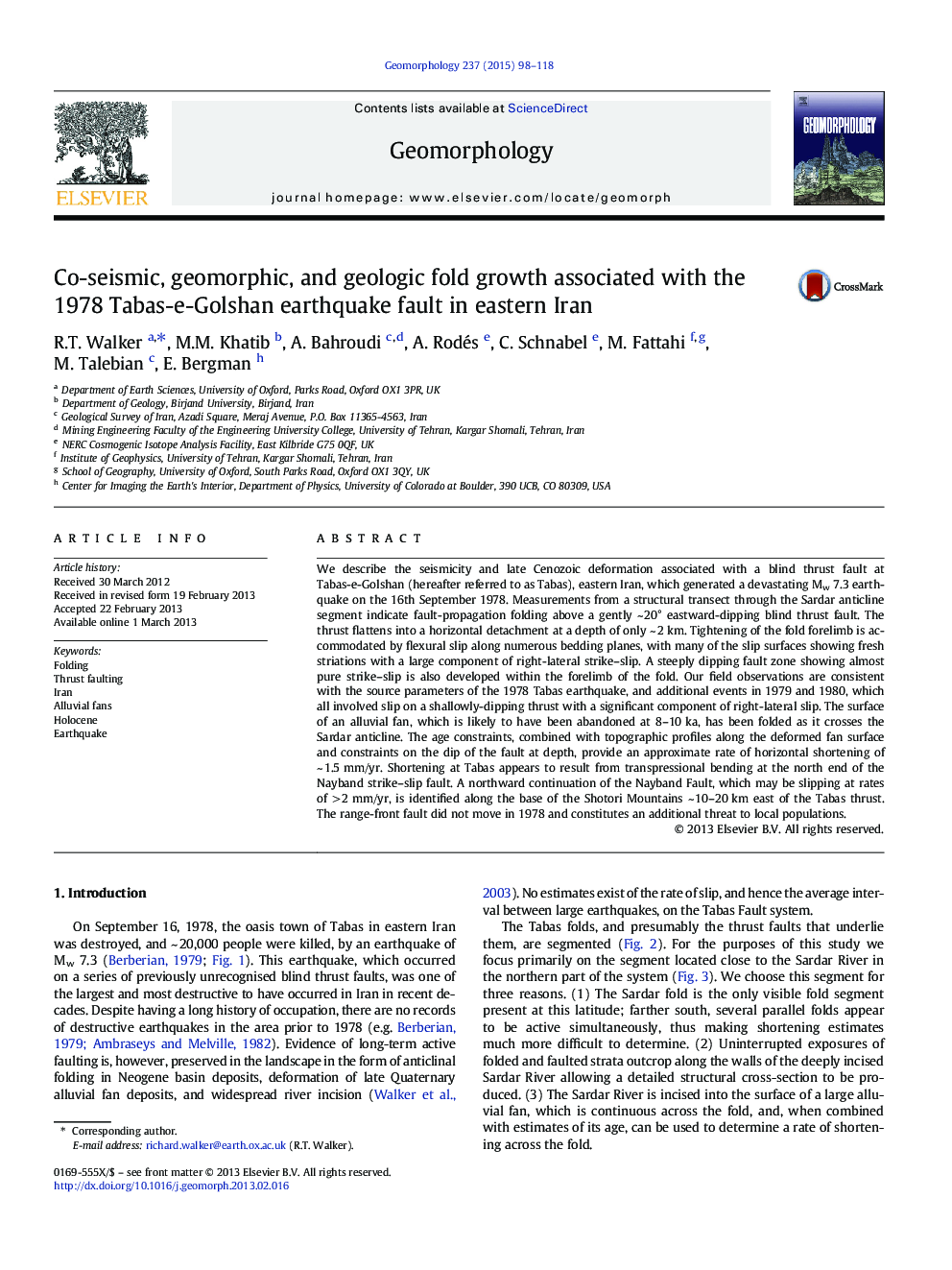| کد مقاله | کد نشریه | سال انتشار | مقاله انگلیسی | نسخه تمام متن |
|---|---|---|---|---|
| 6432222 | 1635412 | 2015 | 21 صفحه PDF | دانلود رایگان |
- Combine seismology, geomorphology, geology to investigate the 1978 Tabas earthquake
- Warping of alluvial fan surface suggests multiple earthquakes in the Holocene.
- Strike-slip is accommodated by distributed deformation within hanging-wall anticline.
- Environment is likely the most important factor in landscape evolution of the region
We describe the seismicity and late Cenozoic deformation associated with a blind thrust fault at Tabas-e-Golshan (hereafter referred to as Tabas), eastern Iran, which generated a devastating Mw 7.3 earthquake on the 16th September 1978. Measurements from a structural transect through the Sardar anticline segment indicate fault-propagation folding above a gently ~ 20° eastward-dipping blind thrust fault. The thrust flattens into a horizontal detachment at a depth of only ~ 2 km. Tightening of the fold forelimb is accommodated by flexural slip along numerous bedding planes, with many of the slip surfaces showing fresh striations with a large component of right-lateral strike-slip. A steeply dipping fault zone showing almost pure strike-slip is also developed within the forelimb of the fold. Our field observations are consistent with the source parameters of the 1978 Tabas earthquake, and additional events in 1979 and 1980, which all involved slip on a shallowly-dipping thrust with a significant component of right-lateral slip. The surface of an alluvial fan, which is likely to have been abandoned at 8-10 ka, has been folded as it crosses the Sardar anticline. The age constraints, combined with topographic profiles along the deformed fan surface and constraints on the dip of the fault at depth, provide an approximate rate of horizontal shortening of ~ 1.5 mm/yr. Shortening at Tabas appears to result from transpressional bending at the north end of the Nayband strike-slip fault. A northward continuation of the Nayband Fault, which may be slipping at rates of > 2 mm/yr, is identified along the base of the Shotori Mountains ~ 10-20 km east of the Tabas thrust. The range-front fault did not move in 1978 and constitutes an additional threat to local populations.
Journal: Geomorphology - Volume 237, 15 May 2015, Pages 98-118
